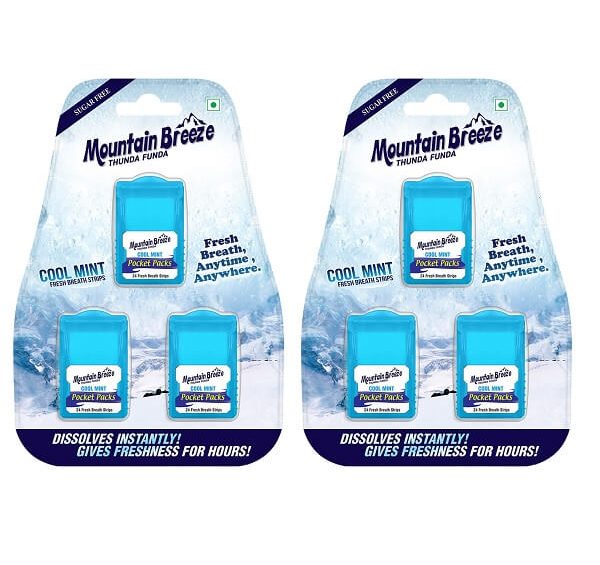Mint has been celebrated for its refreshing flavor and invigorating scent for centuries. Beyond its use in culinary delights and aromatherapy, mint has carved a niche for itself in oral hygiene, particularly in mouth fresheners. This versatile herb, known scientifically as Mentha, boasts a myriad of health benefits, with its antibacterial properties being a key asset in maintaining oral health. In this blog, we’ll delve into the antibacterial properties of mint, exploring how it works to keep our mouths fresh and clean, and why it’s a staple ingredient in mouth fresheners.
The Historical Use of Mint in Mouth Fresheners
The use of mint for oral hygiene dates back to ancient civilizations. The Egyptians, Greeks, and Romans all utilized mint in various forms to cleanse their mouths and freshen their breath. Ancient texts reveal that mint was often chewed to mask bad breath and was sometimes used in mouthwashes to treat gum diseases. This historical backdrop sets the stage for understanding why mint continues to be a dominant force in oral care products today.
The Antibacterial Properties of Mint
Mint contains several compounds that contribute to its antibacterial properties, including menthol, menthone, and limonene. These compounds work synergistically to combat bacteria in the mouth. Let’s break down how these components function:
- Menthol: The most well-known compound in mint, menthol, is not just responsible for the cooling sensation associated with mint, but also exhibits strong antibacterial activity. Menthol disrupts the lipid membranes of bacteria, leading to their destruction. This is particularly effective against bacteria that cause bad breath and gum diseases.
- Menthone and Limonene: These compounds complement the action of menthol. Menthone has antiseptic properties, making it effective in killing germs and preventing their growth. Limonene, on the other hand, is known for its anti-inflammatory and antimicrobial properties, which help soothe the gums and reduce bacterial load in the mouth.
How Mint Freshens Breath
The antibacterial properties of mint directly contribute to its ability to freshen breath. Halitosis, or bad breath, is often caused by the buildup of bacteria in the mouth, particularly on the tongue and between teeth. These bacteria produce sulfur compounds, which are responsible for the foul odor associated with bad breath.
By incorporating mint into mouth fresheners, manufacturers harness its antibacterial power to target and neutralize these odor-causing bacteria. When you use a mint-based mouth freshener, the menthol, menthone, and limonene work together to:
- Kill bacteria that produce sulfur compounds.
- Neutralize odors, providing a fresh, clean feeling.
- Soothe and cool the mouth, enhancing the overall sensory experience.
Benefits of Mint in Mouth Fresheners
Using mint in mouth fresheners offers several advantages beyond merely masking bad breath:
- Natural Ingredient: Mint is a natural ingredient, making it a preferable choice for those seeking to avoid synthetic chemicals in their oral care products. Its natural origin also means it is generally safe and well-tolerated by most people.
- Comprehensive Oral Care: The antibacterial properties of mint contribute to a healthier oral environment. Regular use of mint-based mouth fresheners can help reduce plaque formation, prevent gum disease, and promote overall oral hygiene.
- Pleasant Sensation: The cooling effect of menthol not only leaves the mouth feeling fresh but also provides a pleasant sensory experience. This cooling sensation can also help alleviate minor oral discomfort, such as irritation from spicy foods or minor mouth sores.
- Versatility: Mint is compatible with a variety of other ingredients, enhancing the effectiveness and appeal of mouth fresheners. It can be combined with other natural extracts, such as tea tree oil or eucalyptus, to create powerful, multi-functional oral care products.
Popular Mint-Based Mouth Fresheners
The market is replete with mint-based mouth fresheners, each leveraging the herb’s potent properties to deliver fresh breath and clean mouths. Some popular products include:
- Mint Chewing Gums: These provide a quick and convenient way to freshen breath and reduce bacteria buildup after meals.
- Mint Sprays: Handy and portable, mint sprays offer an instant burst of freshness and antibacterial action.
- Mint Lozenges: These dissolve slowly in the mouth, providing prolonged freshness and continuous antibacterial benefits.
- Mint Mouthwashes: These offer a more comprehensive cleaning action, reaching areas that brushing and flossing might miss.
Mint’s antibacterial properties make it an invaluable ingredient in mouth fresheners, providing a natural, effective way to combat bad breath and promote oral health. Its historical use, coupled with modern scientific validation, underscores its enduring relevance in oral care. By incorporating mint-based mouth fresheners into your daily routine, you can enjoy not only the refreshing flavor and scent of mint but also its powerful health benefits, ensuring a fresh, clean mouth all day long.







